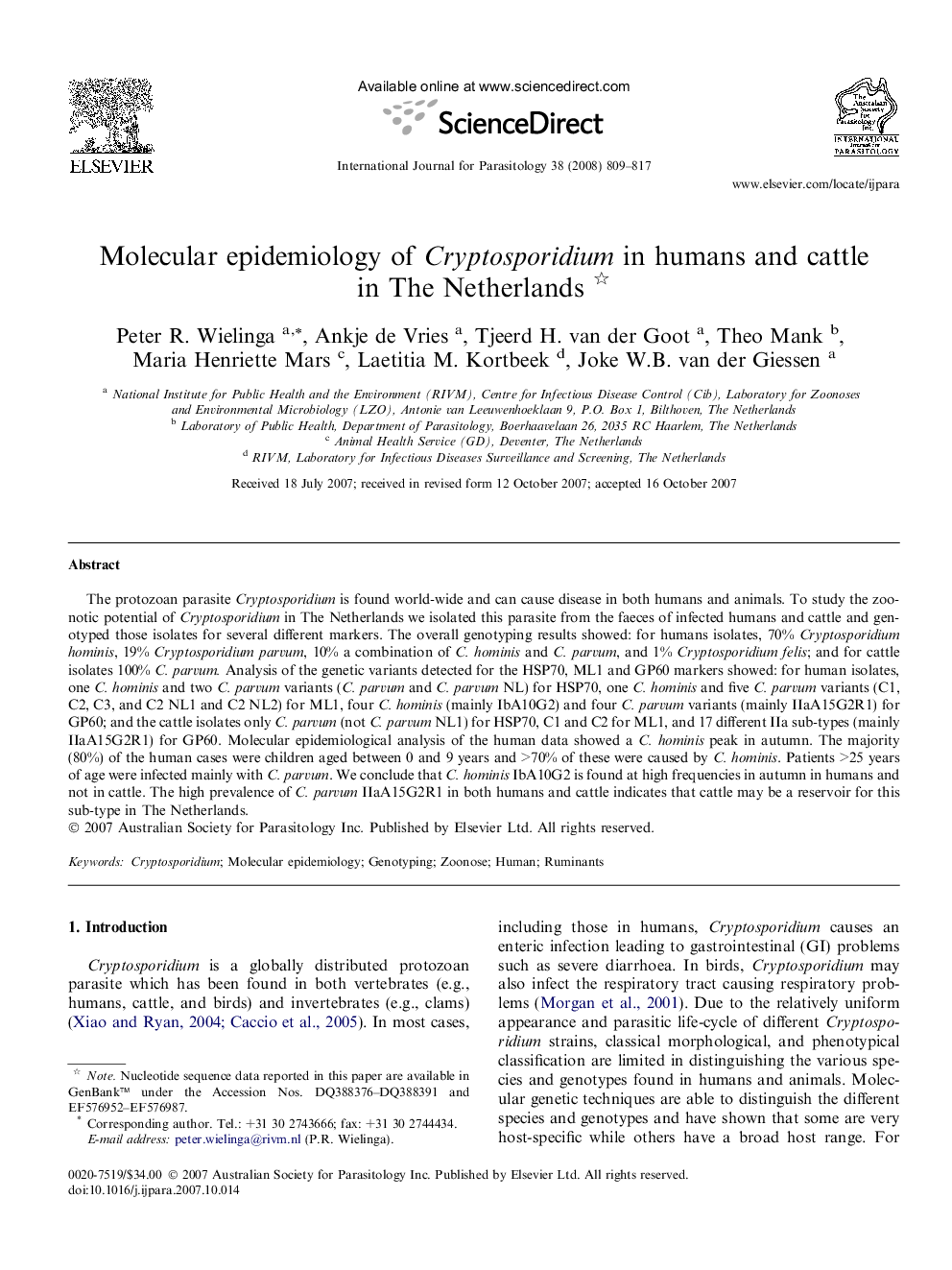| Article ID | Journal | Published Year | Pages | File Type |
|---|---|---|---|---|
| 2436695 | International Journal for Parasitology | 2008 | 9 Pages |
The protozoan parasite Cryptosporidium is found world-wide and can cause disease in both humans and animals. To study the zoonotic potential of Cryptosporidium in The Netherlands we isolated this parasite from the faeces of infected humans and cattle and genotyped those isolates for several different markers. The overall genotyping results showed: for humans isolates, 70% Cryptosporidium hominis, 19% Cryptosporidium parvum, 10% a combination of C. hominis and C. parvum, and 1% Cryptosporidium felis; and for cattle isolates 100% C. parvum. Analysis of the genetic variants detected for the HSP70, ML1 and GP60 markers showed: for human isolates, one C. hominis and two C. parvum variants (C. parvum and C. parvum NL) for HSP70, one C. hominis and five C. parvum variants (C1, C2, C3, and C2 NL1 and C2 NL2) for ML1, four C. hominis (mainly IbA10G2) and four C. parvum variants (mainly IIaA15G2R1) for GP60; and the cattle isolates only C. parvum (not C. parvum NL1) for HSP70, C1 and C2 for ML1, and 17 different IIa sub-types (mainly IIaA15G2R1) for GP60. Molecular epidemiological analysis of the human data showed a C. hominis peak in autumn. The majority (80%) of the human cases were children aged between 0 and 9 years and >70% of these were caused by C. hominis. Patients >25 years of age were infected mainly with C. parvum. We conclude that C. hominis IbA10G2 is found at high frequencies in autumn in humans and not in cattle. The high prevalence of C. parvum IIaA15G2R1 in both humans and cattle indicates that cattle may be a reservoir for this sub-type in The Netherlands.
